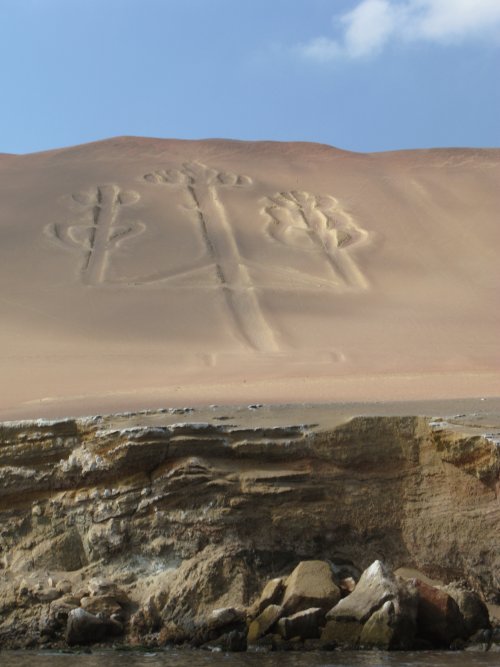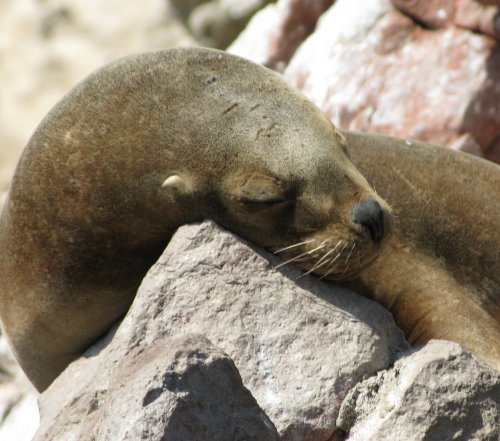The Ballestas Islands

A woman took me by the hand and guided me down the street to her hotel. She showed me the room and told me it would be 50 Nuevo Sol a night. I explained the hotel was included in my tour price and then we discovered that this was not my hotel, she had thought I was a lost traveller needing a place to stay.
As I had left the bus stop the person that was to have picked me up missed me, and it took a few phone calls before they could find me. The hotel I was staying at was very pleasant and dinner was included.
Early the next morning I was collected for a tour of the Ballestas Islands. Speedboats carry 15-20 people out to the islands.
Dolphins can be seen as the speedboat leaves the jetty. You then pass the Candelabra geoglyph on the hill at Pisco Bay. It looks a little like a candlestick, hence the name. It is thought that the Candelabra is over 2000 years old and no one is really sure what it represents and it's purpose.
The Ballestas Islands are sometimes called the poor man's Galapagos. Erosion has created natural caves and arches for colonies of seabirds such as pelicans and penguins, and large numbers of sea lions.
The islands were a very profitable source of income in the 1800s as the bird poo, or guano, was used for fertiliser. The remains of the guano factory can be seen on the island. You are not allowed on the islands but the trip is extensive and lasts around two hours.

The mysterious Candelabra

The Ballestas Islands fertiliser complex

One of the many pelicans found on the
islands

A sleepy sea lion

A pelican flies alongside the boat





